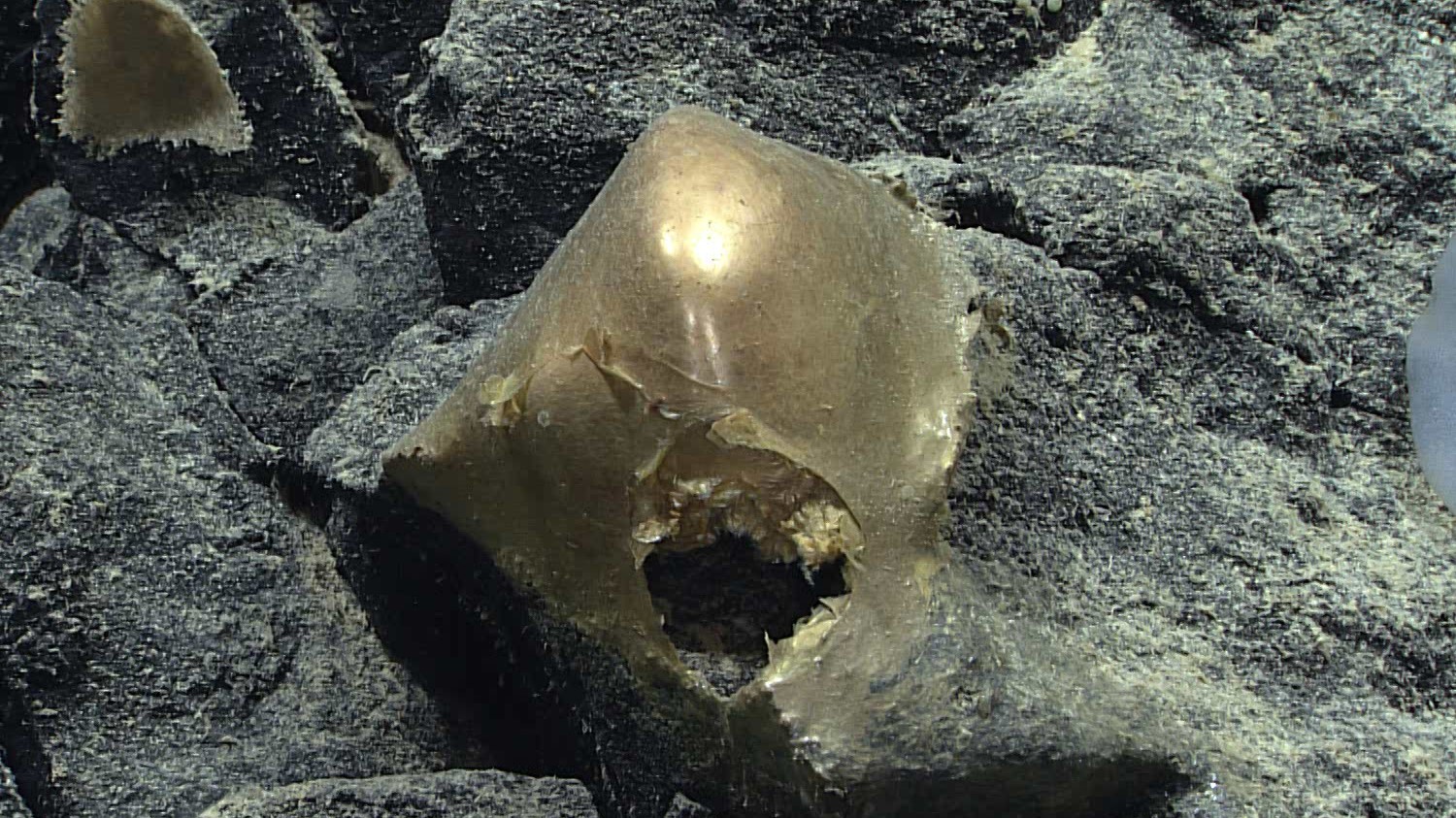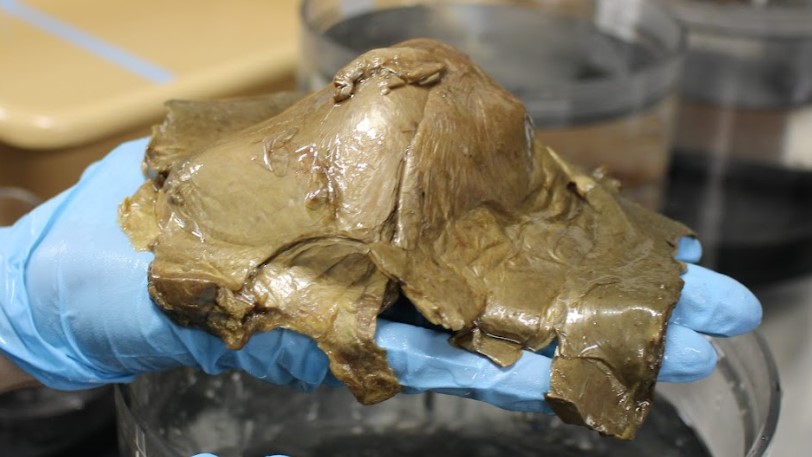Team Egg or Team Sponge? Scientists divided over identity of mysterious golden orb from bottom of ocean
The weird gold dome-shaped object was found during an NOAA expedition to the Gulf of Mexico and is now being preserved in ethanol until it can be sent for laboratory analysis.

The mystery golden orb found at the bottom of the ocean in the Gulf of Alaska is currently being preserved in ethanol on board the research ship Okeanos Explorer. And despite hauling it from the deep, scientists still have no idea what it is. One thing, however, is certain: It is biological in origin.
A remotely operated vehicle (ROV) run by the National Oceanic and Atmospheric Administration's Seascape Alaska 5 expedition plucked it from a seamount 2 miles (3,300 meters) beneath the ocean surface on Aug. 30.
The dome-shaped object, about 4 inches (10 centimeters) wide, had a small hole at the base and appeared to be attached to a rock. Sam Candio, NOAA Ocean Exploration expedition coordinator, said the orb is now in "a holding pattern" as the team finishes mapping the region. Once done, they'll "be shipping all of our samples to the Smithsonian where scientists around the world will be able to access them and provide further analysis," he told Live Science in an email. "Until that happens, the mystery will remain as scientists continue to look for clues in the video data."
Candino said they know it is biological because of the way it was attached to the rock, its structure and the way it appears to have protein-like layers throughout. "There are some morphological similarities to the often bizarre organisms we encounter in the deep sea, but so far the answers have eluded scientists worldwide," he said.
The leading theories are that the gold orb is an egg case of a potentially unknown species, or that it's a type of sponge. "I'm Team Egg Case at the moment, but I'm excited to find out," Candino said.
Jon Copley, a professor of deep-sea ecology and ocean exploration at the University of Southampton in England who was not involved with the mission, is leaning toward sponge "because of the fibrous texture in the pictures," he told Live Science via email. "But that's pure speculation without proper examination."
Sign up for the Live Science daily newsletter now
Get the world’s most fascinating discoveries delivered straight to your inbox.

Sponges have a skeleton made of microscopic, needle-like structures called spicules. Egg cases should have DNA that can be extracted, Copley added. That DNA can then either be matched to a known species or matched to a newfound species when scientists eventually encounter the creature that made the egg case.
Tammy Horton, research scientist and Discovery Collections manager at the U.K.'s National Oceanography Centre who did not participate in the deep-sea mission, told Live Science in an email that identifying the object will be a waiting game. "The color is unusual, but it is not completely unknown to see golden coloured, objects, or more accurately those that have a golden sheen when lit up by ROV lights." She added there are black corals that have a gold sheen, while the bristles of some bristle worms are gold-colored.
Why the orb is golden-hued is still unclear. "Since no natural light penetrates to these depths, it's often hard to determine why certain colors emerge. It could have something to do with the chemical composition, could be a happy accident, or could be a fashion statement," Candino said.
The discovery highlights how little of the ocean has been explored. The world's oceans cover around 70% of Earth's surface, or 139 million square miles (360 million square kilometers), yet just under 25% of the seafloor has been mapped. Up to 1 million species may inhabit the oceans, two-thirds of which have yet to be discovered.
The mystery of the golden orb will likely be solved soon, but "for now, I think it's nice not knowing," Copley said. "The day we know everything that's in the ocean would be the day we stop exploring."

Hannah Osborne is the planet Earth and animals editor at Live Science. Prior to Live Science, she worked for several years at Newsweek as the science editor. Before this she was science editor at International Business Times U.K. Hannah holds a master's in journalism from Goldsmith's, University of London.










